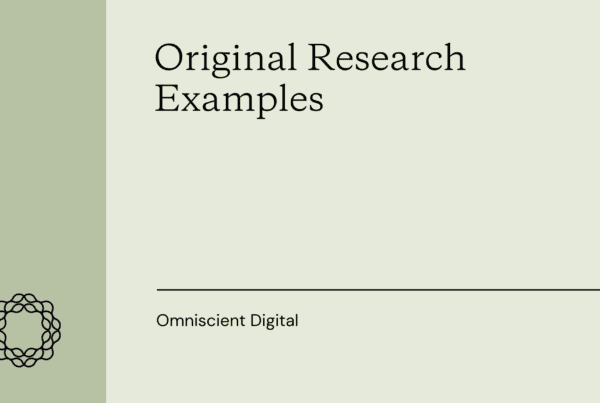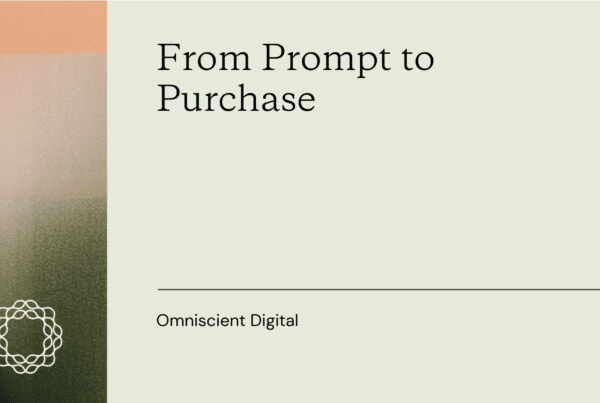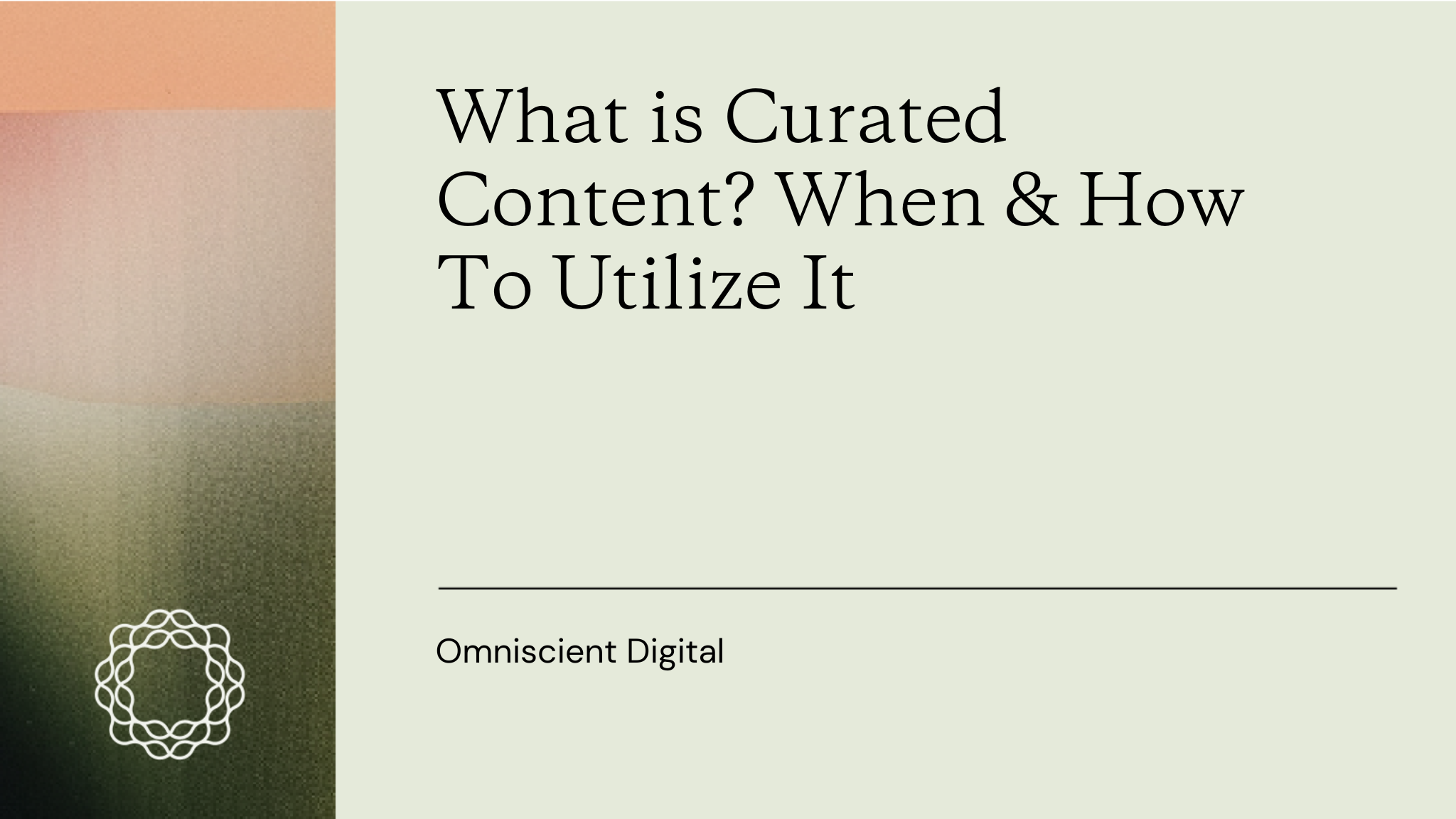
What makes for the most engaging social media posts?
Research and insights are among key patterns, as this analysis of 1,200 LinkedIn posts by 12 creators shows.
The posts containing research and analysis are content curation at its best: sharing relevant content (in this case, data) with your audience and enhancing it with your unique perspective, be it a concise summary, insight, or takeaway.
When done effectively, curated content allows you to:
- Increase your brand’s reach on social media
- Build authority and become a thought leader
- Foster connections
- Save resources on creating new content
- Get the most out of existing resources
This article explores the what, why, and how of using curated content to achieve these goals and more.
What curated content is & isn’t
Content curation goes beyond a mere share.
Curated content is the one you thoughtfully select, organize, and share while adding your perspective, insights, or commentary. It must always be reliable and resonate with your audience. Otherwise, you risk your credibility.
Michael Brenner of MarTech compares this process to avoiding a mishmash of ideas:
“If you’re random or careless, you could end up looking like a low-rent ‘secondhand shop’ of ideas—a hodgepodge of hit-or-miss items for your audience.”
So, what makes content curated? Ensure it ticks these boxes:
- Relevant: Is it directly valuable to your target audience?
- High-quality: Does it contain accurate, credible, and up-to-date information?
- Adds value: Do you offer your own unique insights and context?
- Aligns with strategy: Does it support your broader content marketing objectives (e.g., positioning your brand as a thought leader)?
- Addresses ethics and attribution: Are you properly crediting the original source and respecting intellectual property? (We share key steps to give proper credit to the owners of the original piece later in the article.)
On the other hand, content curation isn’t:
- Reposts without commentary
- Random links to boost clicks
- Copied content without credit
- Disconnected from your brand
- Purely self-promotional
While curation primarily uses external sources, it can also involve repurposing your existing content.
In the following section, we outline the 5 most effective types of content curation in action, including both external and internal.
Examples of content curation highlighting its benefits
#1: A newsletter to foster strong brand-audience relationships
How did digital marketer and writer Ann Handley achieve a 2,000% growth in her newsletter Total ANNARCHY in 3 years while nurturing a strong reply rate?
Building relationships with influencers has been key to expanding her subscriber base from 2K to 42K. As Ann advises:
“Call out the good work of others. Share the love. Don’t expect reciprocity—that’s not friendship, that’s coercion.”
Ann ties her content to timely topics and references the great work of others. For example, in her 148th issue, she talks about how “Weird Barbie” could be our Hero in Marketing:

Ann also includes an “amusing finds” section called “Shenanigans” in each newsletter.
Takeaway: Curating relevant content and tying it to current events helps build audience relationships and engagement.
#2: Email digest to establish your brand as a go-to source in your industry
Si Quan Ong and the Ahrefs marketing team dedicate hours each week to content curation, which they then share in a weekly Ahrefs Digest. They choose top reads from the web, including the finest content from the Ahrefs Blog.
With 284K SEOs and marketers now reading the digest, Ahrefs has curated over 170 editions, sharing:
- Recent news and updates in SEO and digital marketing
- Insights from the field
- A relatable meme (my personal favorite)
What’s not to like?

Takeaway: A weekly curated digest allows you to consistently share diverse yet relevant content, strengthening your brand’s thought leadership over time.
#3: Social media posts to increase social engagement
To explore this content curation approach, let’s revisit the analysis of the 1,200 LinkedIn posts we mentioned at the beginning:
Cassandra Naji and her team at the content marketing agency Campfire Labs found that successful LinkedIn posts often share unique insights derived from analyzing publicly available data.
Let’s look at an example post following this formula from Cassandra herself. This post accurately designates great content curation as it:
- Shares data relevant to the audience with a source link (in comments)
- Adds unique perspective and analysis
- Organizes key data points and insights clearly
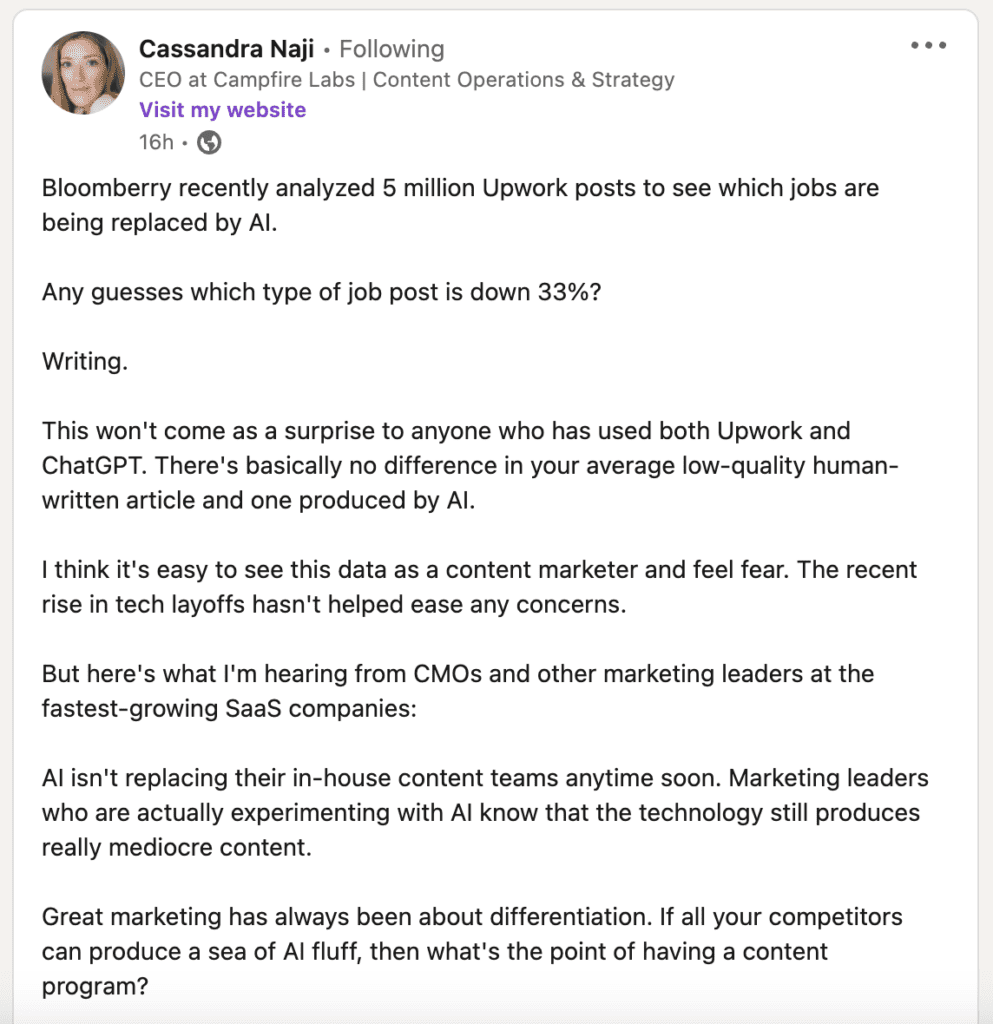
In just 16 hours, this post gained significant engagement, with increasing likes, comments, and shares.
Why does such type of content resonate? One reason may be the Labor Illusion phenomenon, which Neil O’Grady refers to in his study of the best content hooks:
“A psychological phenomenon where people perceive a service to be more valuable when they can see the effort being put into it.”
In this case, the audience recognizes Cassandra’s effort in analyzing and presenting relevant data.
Takeaway: Curating and analyzing credible data helps create social posts that stand out and foster audience engagement.
#4: Blog roundup to connect insights to wider perspectives
Now, how about an example from none other than Omniscient Digital?
Omniscient Digital’s weekly newsletter, Field Notes, curates content and SEO insights from client work and growth leaders while linking to additional recommended reads.
You can explore past Field Notes on the Omniscient blog, where each post includes a “Recommended Reads” section at the end. This section:
- Enhances existing content with relevant extra reads
- Uses high-quality content and sources, citing credible experts
- Offers a summary and take on these additional reads
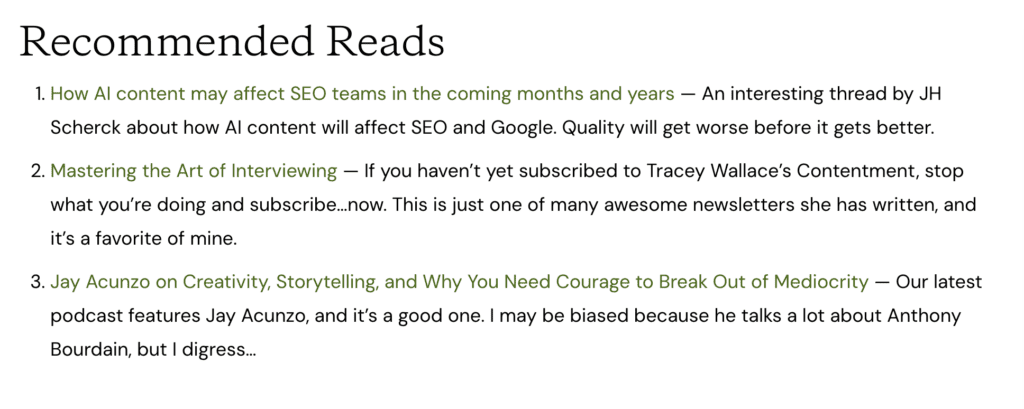
Each Field Notes edition curates a mix of external and internal links based on goals:
- External links build credibility by referencing influencers
- Internal links drive traffic and reinforce expertise
You may find these editions interesting:
- Content brainstorming in a world of ‘doing more with less’: Fed up with feeling like your content well is dry? Discover strategies to squeeze maximum results from limited resources.
- The best way to measure content program success: Learn the key metrics to prove your content is actually driving business results and secure the budget you deserve for even better content.
- Open or closed: The merits of gated content: Should you give your best content away for free? Get the lowdown on when gated content makes strategic sense for lead generation.
P.S. See what we did here? Curated a few examples and insights from internal sources into a concise roundup to provide you with additional value.
Takeaway: A curated blog roundup allows you to provide added value by connecting original insights to relevant wider perspectives from both external thought leaders and your own content.
#5: Compiling older resources into valuable guides
Last but not least, content curation can also involve revisiting your existing content and compiling it into new, value-added guides. This can:
- Complement older material with new perspectives
- Consolidate key information in one place
- Reach new audiences who missed it the first time
For example, Ahrefs compiles its most popular Digest reads into quarterly “Best of” roundups.
By resurfacing their most useful insights, Ahrefs extends the value of these resources while saving time creating new content from scratch.
Besides, such curated resources can become even more valuable when integrated into a robust knowledge base, allowing customers or teams easy access to the best knowledge base software.
Takeaway: Strategically compiling your top-performing content into guides, roundups, or collections extends the value of existing assets while efficiently reaching new audiences.
Curating vs. creating content: When to choose each (or both?)
Curated content seems invaluable. Does this mean it should replace creating original content in-house?
Not at all.
While 57% of marketers struggle to create the right content for their audience in 2024, combining curation and original creation can help overcome this challenge.
Here are the best scenarios for prioritizing curated or original content, plus when balancing both works best:
When to prioritize content curation
Consider curating industry news, updates, and other experts’ insights to:
- Save time when resources are limited
- Expand reach and build relationships with social media influencers
- Fill content gaps where you lack expertise or time to create original content
- Stay current on trends and inform your audience
When to prioritize original content
While AI-generated content can assist with certain tasks, it’s key to prioritize the unique insights and strategic value that human-crafted content offers. Creating custom content in-house is ideal for:
- Demonstrating your brand’s unique expertise
- Addressing specific audience needs and pain points
- Boosting SEO with high-quality content
- Directly driving lead generation
When to use both approaches
Surprise-surprise: The ideal strategy balances both curated and original content. For example, Hootsuite recommends sharing 60% curated and 40% original content.
This gives you valuable curated insights to share while still highlighting your expertise through custom assets. And your audience gets the best of both worlds. A win-win.
Now, how exactly do you start curating content?
How to curate content that adds value
Let’s walk through the process of curating content step-by-step with the following scenario in mind:
You are a content marketer for a SaaS company specializing in project portfolio management software. You want to curate content that would help educate your audience on the importance of effective collaboration in remote teams.
1. Clearly define who you are curating content for
Your audience might be project managers, team leaders, and executives at companies that use remote work models.
2. Set objectives to keep your content curation aligned with your marketing goals
What do you want to achieve with the curated content? Here, your objectives might be to:
- Educate: Provide insights into remote collaboration challenges and best practices.
- Position your expertise: Demonstrate your understanding of remote work trends.
3. Find content worth curating
This Omniscient article offers both helpful tips and things to avoid, like:
- Tap into your network: Follow relevant industry experts on social media and subscribe to thought-provoking newsletters.
- Branch out: Don’t just rely on Google search. Explore diverse sources for fresh perspectives.
Here’s where else to dig for content gold:
- Industry blogs and publications: Prioritize sites like Workzone or The Digital Project Manager, which are known for insightful articles and case studies.
- Data-driven insights: Seek out relevant studies and reports from reputable sources like Gartner, Deloitte, KPMG, PwC, etc.
- Offline sources: Don’t overlook the value of conferences, webinars, and industry events for curating timely content.
- Additional sources:
- Customer reviews and testimonials: Share how your product solves real-world problems.
- Niche forums: Find discussions relevant to your audience’s specific pain points.
- Short Videos: Find your most informative videos on socials, and repurpose them on other channels or webpages.
4. Add your unique context to establish yourself as a thought leader in your niche
This is where you transform curation into valuable content. Consider the following ways:
- Provide a brief summary of your chosen content, introducing its key points.
- Share your insight on why it’s important and how it aligns with your company’s solutions or a question to spark discussion.
- Give a relevant takeaway, connecting it back to your audience’s pain points. Within our scenario, this may be “this highlights a common mistake that our project management software is designed to help teams avoid.”
5. Give proper credit and foster a positive network
Finally, to ethically curate content, keep these points in mind:
- Always include the original source link.
- Tag the author to show respect and possibly encourage them to reciprocate.
- Use quotation marks and explicitly mention the author when directly quoting a piece of content.
- Verify the original creator’s licensing terms or usage permission if curating any visual content (photos, charts, etc).
- Follow community guidelines: some platforms or online communities have specific content sharing and attribution rules. Adhere to these guidelines to avoid conflicts.
Here are a few extra tips for curating content that’s both valuable and engaging:
- Plan ahead: Use a content editorial calendar to schedule a mix of curated and original content, ensuring consistency for your audience.
- Prioritize quality: It’s better to share fewer, high-quality curated pieces rather than a flood of mediocre content.
- Repurpose across formats: Turn a curated article into a Twitter thread, an infographic, or a short video for your social channels.
- Consider your platform: Customize how you present curated content based on different platforms (professional on LinkedIn vs. more playful on Instagram).
How to disseminate curated content to spark interaction
With your content now ready to go curating, consider the following steps.
1. Select optimal distribution channels to reach your target audience
For example:
- Company blog: Publish curated content as a roundup post (e.g., “Top 5 Articles on Remote Team Collaboration This Week”) with your commentary and further insight on each piece.
- Social media: Choose platforms where your target audience is active (likely LinkedIn and Twitter). Share individual articles with brief summaries and your key takeaways.
- Email newsletter: Include a curated content section within your regular newsletter, especially if you have dedicated project managers and team leads subscriber base.
All three channels are among the most effective for B2B marketers, according to the latest report by Content Marketing Institute on B2B content marketing benchmarks and trends:
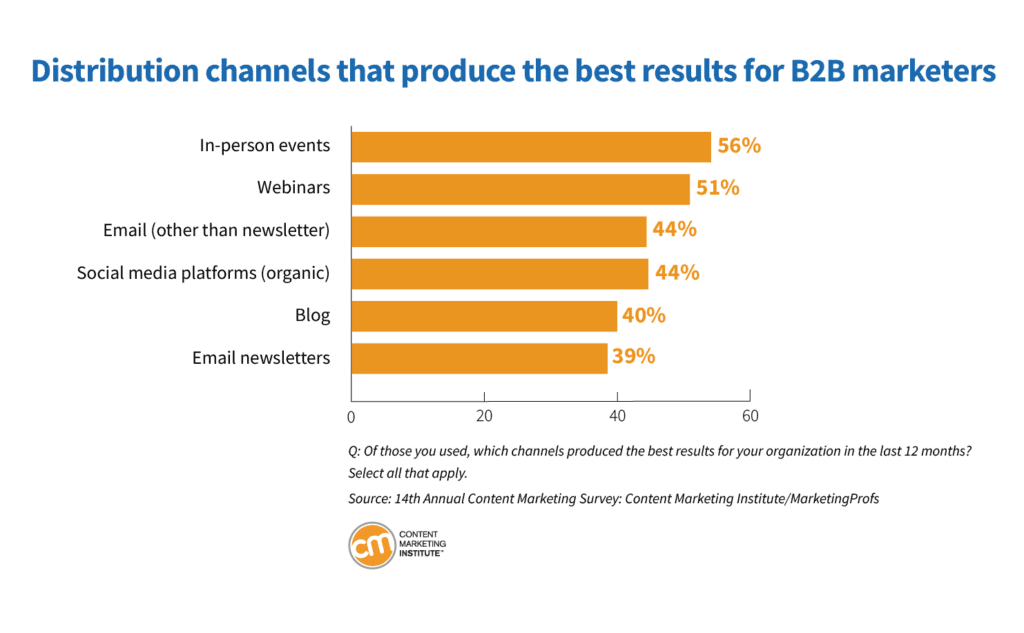
2. Repurpose curated content for maximum impact
You can use:
- Visuals to create graphics from the curated content and share them on Instagram or Pinterest.
- Threads on Twitter to turn a curated piece with multiple key points into an engaging list by breaking it down and offering your insights on each.
- Short videos to summarize a curated piece’s main points for social platforms media like LinkedIn, Instagram, or TikTok.
3. Promote visibility and engagement
Consider these steps for robust content promotion:
- Adding relevant industry hashtags to increase the reach of your curated content (#remotework #collaboration #projectmanagement).
- Tag the original authors of the curated content or other industry experts to expand your reach and encourage engagement.
- Using your company’s network, encourage employees to share the curated content on their personal social media channels.
- Providing your partners or affiliates with easily shareable curated content to expand your reach.
- Using paid amplification (optional) to boost high-performing curated content to targeted audiences.
4. Analyze results to optimize your strategy
Finally, pay attention to:
- Social media analytics: Monitor each platform’s shares, comments, and reach on each platform.
- Website analytics: Track which articles drive the most traffic to your website from your curated content efforts.
- Lead tracking: If you are gating curated content behind forms, analyze which content is effective in lead generation.
Is curated content enough? Finding the ideal balance
While curated content can fill gaps, it shouldn’t entirely replace your unique, original material.
Content curation should be one element of a broader content marketing strategy, among others:
- Original content creation: Investing in blog posts, whitepapers, ebooks, videos, and other resources that showcase your unique expertise.
- User-generated content: Encouraging and highlighting customer reviews, testimonials, and case studies to build social proof and credibility.
- Branded content: Using storytelling to communicate your brand values and connect with your audience emotionally.
To get tactical and in-depth at making winning content, check out the comprehensive 8-component digital course that Omniscient offers.
Conclusion
Curated content is about adding value through thoughtful selection, organization, and commentary of relevant content via newsletters, social media posts, blogs, and other communication channels.
Used strategically, curated content allows you to:
- educate your audience
- establish thought leadership
- foster engagement
It should complement original content as part of an integrated content strategy.
Curate to educate. Create to captivate. Partner with Omniscient to turn content into traffic and conversions (*wink*).

